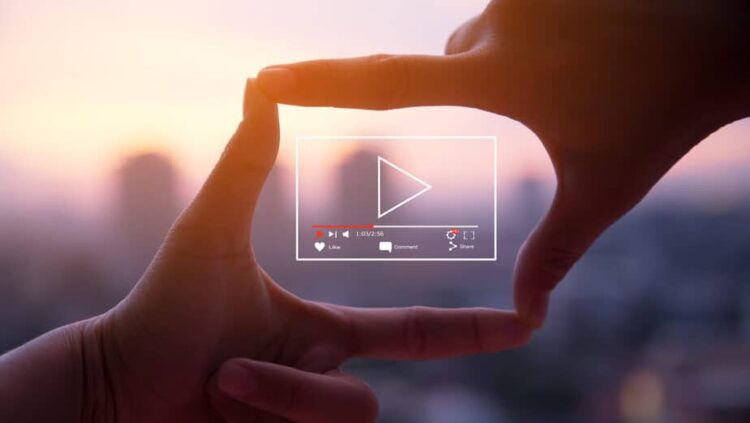2020 is finally here and it is pretty clear that when it comes to advertising video is the king and we’ve got marketing statistics to prove it. Video ads dominated the industry last decade, and, in all probability, hyped-up with AI, AR, VR, they’ll dominate the next. Moreover, according to the newest data video ads are now used as a marketing tool by 85% of businesses and more than 90% of marketing professionals have stated that video ads are the assurance of a positive ROI. Video works. It is engaging, memorable, shareable and very entertaining.
Thus, the only smart thing to do really is to try to keep up the pace and stay on top of the always-changing video ad landscape with all of the new formats, regulations, statistics, and trends. Now, there’s no way we can offer you a strict rule-book on video advertising because it’s not how advertising works, but we can offer very helpful tips and tricks sure to nudge you towards building a strong video marketing strategy. So, without further ado, here are your 2024 dos and don’ts for video advertising.
DO: know your video ad types and formats

Video content easily engages customers, can effectively gain and boost brand awareness and drive sales. This is exactly why a basic understanding of the available types and formats should be listed as a #1 essential skill for marketers and be a must-have pre-requisite for a job. Perhaps even more important, choosing the right video type and format is key to a successful ad campaign. A strong grasp on the available video ads, understanding of where they work better, how the audience reacts to different formats and how to budget for each one will ultimately morph into the ability to unmistakably choose the best video type and format to communicate with your audience. This blog post will help you to refresh the memory and easily leverage your knowledge into effective customer engagement and cash in on the growing influence of video ad culture.
DON’T ignore new rules and regulation

When it comes to rules and regulations – everyone should be paying attention. If you aren’t new to the advertising game, you already understand how ignoring any set rules leads to missed opportunities and problems. Try to always keep your hand on the pulse or, better yet, partner up with a professional ad network which will do the job for you. Remember when last year Google announced their war on annoying and obnoxious ads? Well, every single brand and publisher that ignored the new ad-blocking policy along with those who just missed the big announcement suffered the consequences: Google said it removed ads from 1.5 million apps and nearly 28 million pages that violated publisher policies. And, mind you, Google went all in to help everyone to effortlessly comply with their new ad-blocking policy – they’ve partnered up with Coalition for Better Ads and their Better Ads Standards program and produced a tool created specifically to help pinpoint those ads deemed destructive. Last year one of the most popular auto-play video ads with sound made the chopping block along with 12 other ad types.
DON’T rely on sound for communication

Sound off is our new norm, particularly with mobile video ads. A survey of the U.S. consumers showed a whopping 92% watch videos with the sound off according to a 2019 report from Verizon Media. People are on their phones on-the-go, meaning, mostly in-public so trying to grab someone’s attention with sound is now more in the realm of the impossible. Sound-off removes unnecessary language barriers from international ads. And, honestly, it’s highly doubtful that anyone will put on headphones just for an ad. People have many reasons to turn the sound off, hence companies need to get on boards and learn how to make an effective video ad without sound. For video creators, no-sound is actually not a barrier, but rather a great opportunity to get creative with beautiful imagery and engaging storytelling.
You can use captions or graphic overlays to get your message across, just keep the text short and call-to-action simple. It’s worth noting that 80% of consumers are more likely to watch an entire video when captions are available. And, honestly, if you are relying on a loud sudden unexpected sound to get someone’s attention, that won’t be the kind of attention you need. Furthermore, last year auto-play video ads with sound were marked as highly disruptive by well over 66 000 surveyed consumers worldwide. Making an impact shouldn’t be based on annoying your audience, and forward-thinking brands are working on making their video ads shine without a sound.
DO: KISS

Yes, please do “Keep it simple, stupid”! The U.S. Navy was right on the money with this one and even 60 years later the principle can be applied almost everywhere. First of all, most people skip ads after just a few seconds, if that. All in all, you have 5-10 seconds to really grab someone’s attention and max 30 to get your message across. Plus, as already mentioned, we are now all a part of the silent king of the video phenomenon.
So, keeping things simple means that all of the important information should really be conveyed in an understandable, concise way, with a clear call to action and easily identifiable brand identification in the first ten seconds. Keep your branding consistent, stay on the massage and don’t take too long to state your message – that is as simple as it gets. You’ll be surprised to see how this approach will guide you to an ideal online video ad experience. And, keeping it simple, of course, doesn’t mean that creativity or quality of your video ads should suffer.
DON’T: neglect storytelling

In the age of cutting-edge tech, on-point personalization and out-of-the-box creativity audience have developed an intolerance for emotionless un-invested product buying. Stories communicate messages in highly emotional ways, they attract, engage and sell. Stories are extremely memorable and combined with the video they bring advertisement to point of being unforgettable. There’s no better way to communicate a message and engage than with a great story told through a professional video ad. With the emphasis on great and professional, meaning, armature storytelling, and sub-par video ads can and will have a negative effect.
DO: educate with your video ads

Google says you should lean into the “how-to” content. Self-directed learning is a huge deal on YouTube as more than 7 in 10 viewers use the platform to educate themselves and solve a problem they’re having with their work, studies, or hobbies. This gives brands a new way of reaching customers with very popular educational video ads. This “how-to” approach to video advertising can quickly build trust in your brand’s authority; encourage sales, and effectively engage the audience. Moreover, educational ads are willingly shared because they aren’t seen as ads. Just go online and search for inspiration: there are awesome make-up tutorials by leading makeup brands, restaurants share their most popular recipes and you learn how to save fuel with Volvo’s ‘how-to’ videos which answer common trucking questions and then make yourself a custom t-shirt with Lenovo.
 Hi Boox Popular Magazine 2024
Hi Boox Popular Magazine 2024



